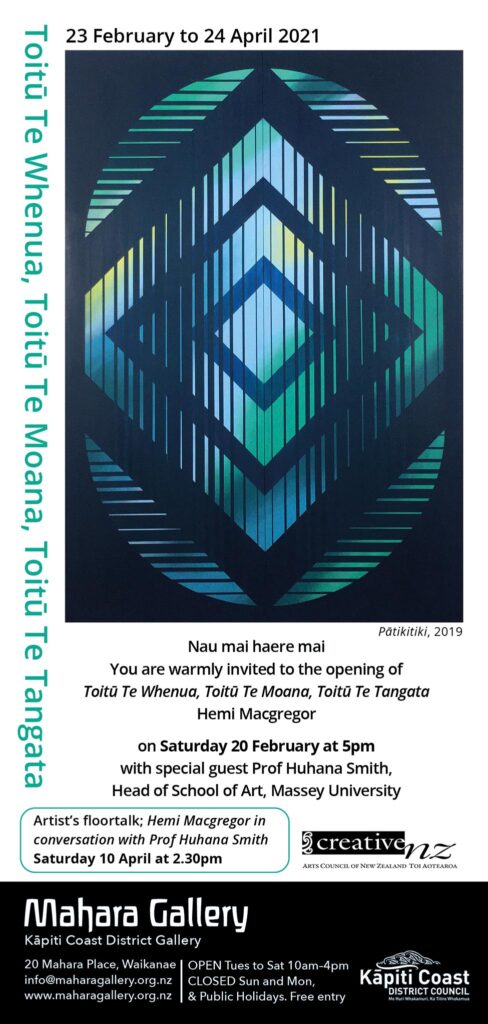The kaupapa for this body of work originated in observing the changing of the seasons. The winter months moving into spring bringing growth, watching the natural environment come alive with the flowering and fruiting of new life, and the evolution into the long summer days. Like the sky, the earth, the oceans and the rivers, through this cycle we come alive and understand that we are implicitly linked. In this cycle we are engaged through all our senses and we begin to re-establish our relationship with the atua and their offspring. In these paintings I seek to reflect the atua through an abundance of growth and new life and to inspire reflection on the interconnectedness between the well-being of the natural environment.
In my home I am surrounded by the artworks of friends and whanau; this creative connection keeps me grounded in these important relationships. I am often drawn to the structure and patterns evident in raranga (weaving), in particular I enjoy observing the works of my mother, Marata Macgregor. I was drawn specifically to the geometric structure and the mnemonic patterns that speak directly to the values, beliefs and attitudes held within Māori culture. Through this reflection I was also able to reconnect and collaborate with my mother—now passed—and re-establish this knowledge into my current context and reality.
The pattern pātiki became central to the formation of this body of paintings. Found across the practices of whakairo, raranga, tukutuku, taniko, kowhaiwhai and ta moko, pātiki—a diamond form—is a reflection of the shape of the flounder also named pātiki. Pātiki are more prevalent in the summer months as they move from the oceans into rivers with the warming of the waters; pātiki the pattern speaks to the abundance of the flounder, but also alludes to the abundance and prosperity relevant to food gathering and storage around this time of the year. The diamond pattern and the fish are also associated with the astrological marker Te Rua Pātiki (the Coalsack nebula) a dark nebula of dust near the Southern Cross that gives the appearance of a gap in the stars of Te Mangō-roa (The Milky Way). Through this pattern we see the synchronicity between the celestial calendar and the changes in the environment as well as the ritualistic practices that allow sustainable seasonal harvesting.
The other dominant visual form I have explored is the oval or circular shape evident in all of the works, these forms encase the patterns and create an interplay between foreground and background—between negative and positive space. Through these artworks the coloured section of the paintings become light pushing through the silhouetted negative of the pattern. These negative and positive space suggests an interplay between the realms of Te Kore, Te Pō and Te Ao Marama; they become a reflection of the influence of the atua and our tīpuna in our everyday life.

